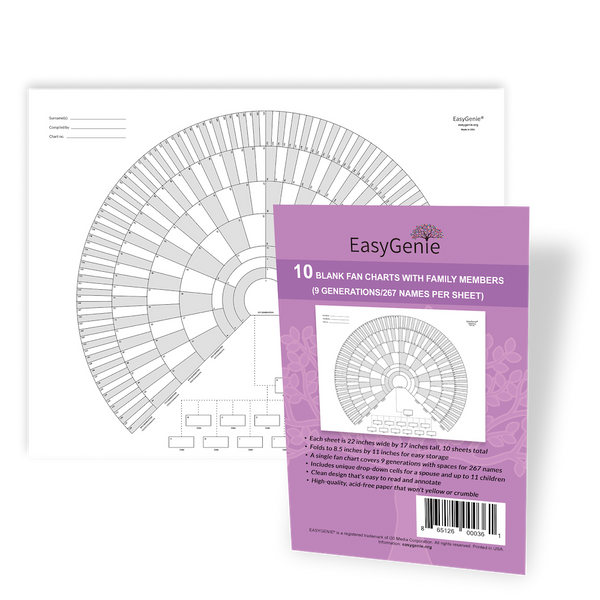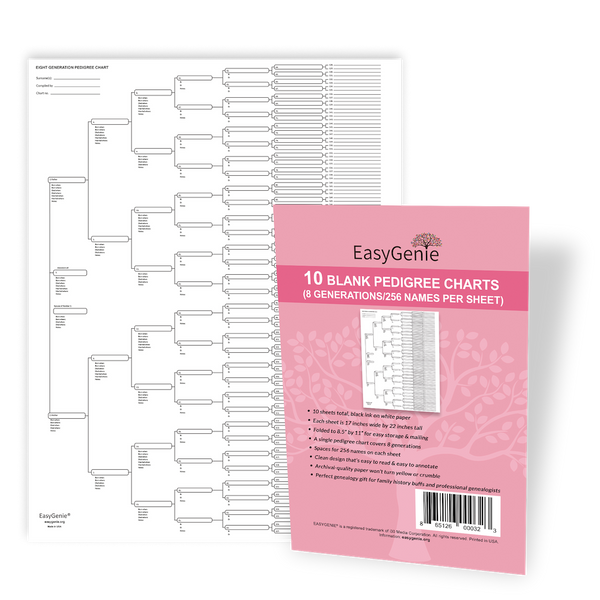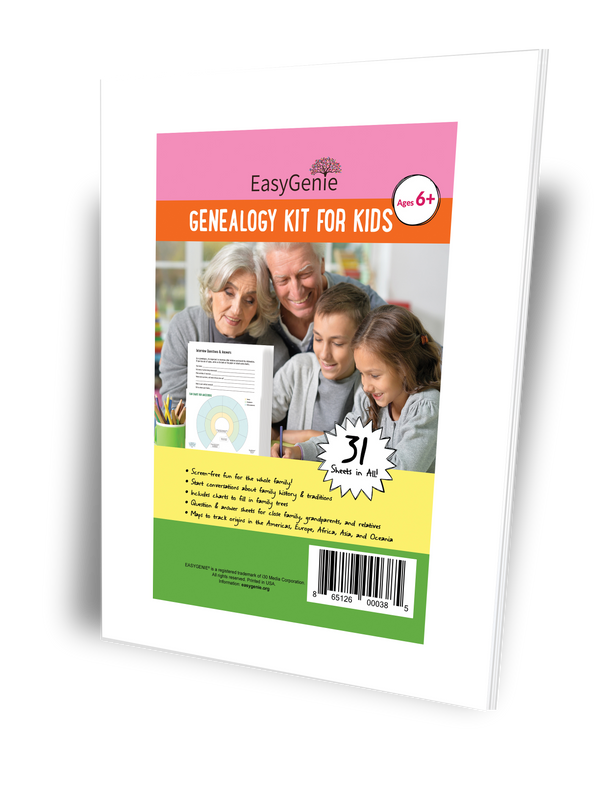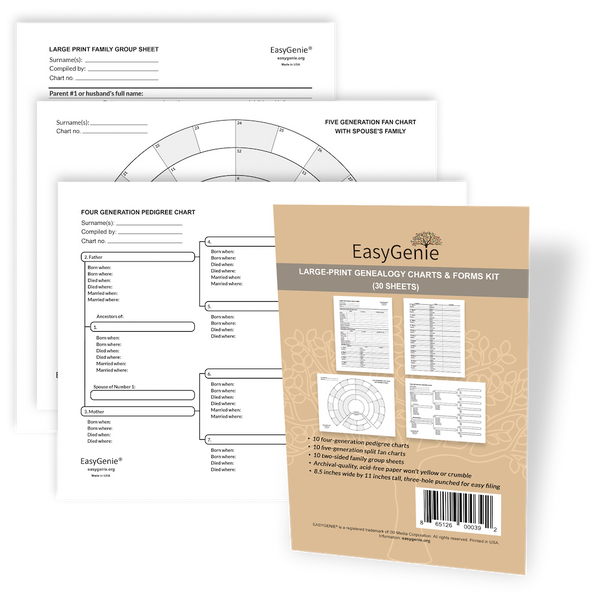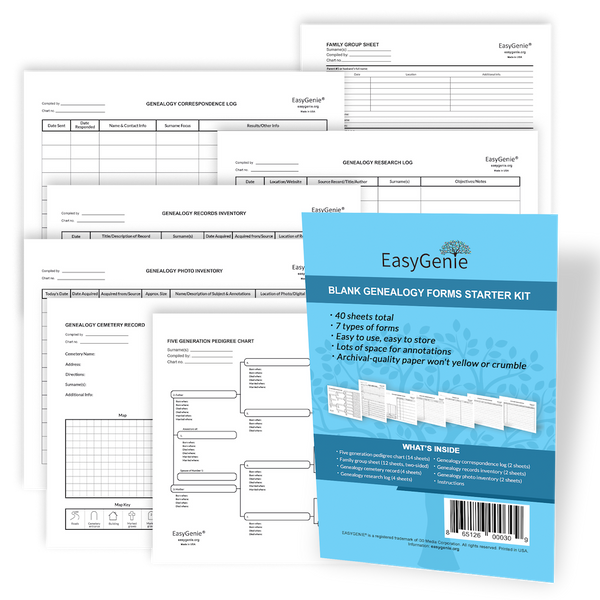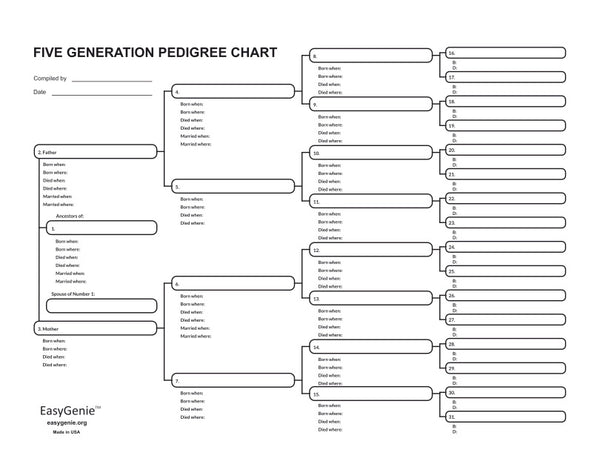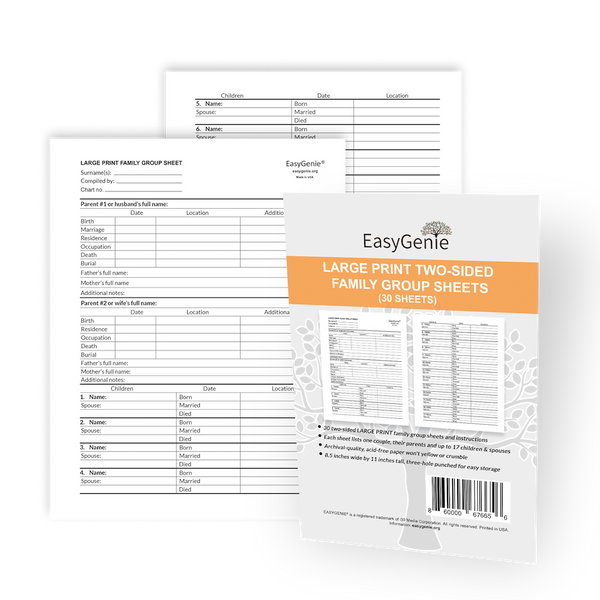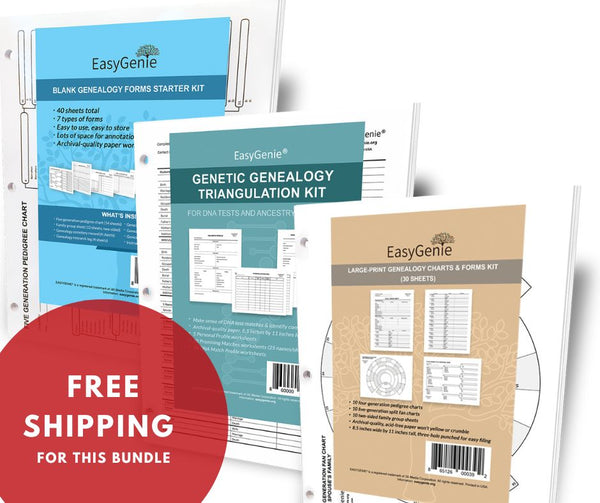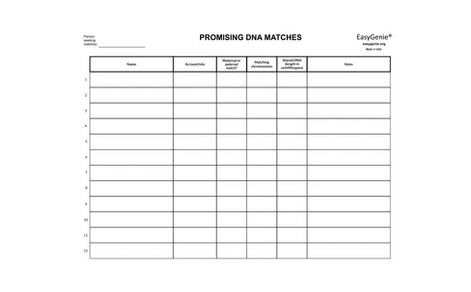
How to use EasyGenie charts to perform genetic genealogy triangulation
Ian LamontWhile some people use Microsoft Excel or Google Sheets to organize DNA matches, it's also possible to use paper worksheets to record information and narrow down the search for ancestors. Paper forms are easy to use, and don't require purchasing Microsoft Office or learning how to use spreadsheet software.
Regardless of the tools you use for triangulation, don't expect instant breakthroughs. The process may take months to triangulate DNA matches to a specific shared ancestor. It will almost certainly require reaching out to DNA matches and encouraging them to share family details that may not be included in their website profiles. Be polite, and offer to share information that may be useful to them.
Many of the fields on the forms are self-explanatory, such as a name or place of birth. Other fields require logging into the DNA testing services' websites (see "Getting the details") and copying specific pieces of information you find to the EasyGenie worksheets.
The EasyGenie Genetic Genealogy Triangulation Kit for DNA Matches includes three types of worksheets:
Personal Profile

Use this form to record basic data for the person seeking matches. This could be you, a parent or grandparent, or a friend needing help with family history. Other fields include:
- Account/website. Enter the names of DNA testing services here, such as Family Tree DNA or Ancestry.com. There are spaces for two services on each sheet.
- Account owner. The person who opened the account. Note that the account owner may be different than the person whose DNA is tested--for instance, in some families, it's common for a trusted family genealogist to oversee testing for parents, spouses, and cousins.
- Kit number/username. Some services identify tested individuals by their kit numbers, while others use a name, a username, or an alias.
- Haplogroup. A haplogroup is a group of people who share a set of the same genetic markers in their DNA. The haplogroup connection goes back for thousands of years along your father's father's father's branch (paternal haplogroup) and mother's mother's mother's branch (maternal haplogroup), going back to antiquity along the direct paternal and maternal lines. Haplogroups are associated with certain regions, and sometimes certain surnames, which can give insights into a tested individual's origins. Note that not all DNA tests provide haplogroup results, and only men have a paternal haplogroup (women can ask fathers or brothers to be tested to determine their families' paternal haplogroups).
- Family origins. Enter what information you know about each side of the family, including names, family surnames, and places of origin.
Promising Matches

You may have hundreds or even thousands of potential DNA matches. This simple worksheet allows you to focus on the most promising matches, including people who share lots of DNA and/or people who are from branches that you don't know much about. Some of the fields are the same as those used in the Personal Profile and DNA Match Profile sheets. Others include:
- Maternal or paternal match. DNA tests will only be able to reveal if a match is from the mother's or father's sides of the family when a relative has taken the same DNA test *and* he or she is manually identified or linked as a maternal or paternal match.
- Matching chromosomes. Biological relatives will have identical segments of DNA on specific chromosome pairs. List the chromosome pairs by number, if known (for example, "3, 7, 18").
- Shared DNA (length in centiMorgans). A centiMorgan (cM) is a unit of measure for the length of shared DNA segments, with 1 cM equalling approximately one million base pairs in a strand of DNA. The bigger the number, the closer the relationship. You will have about 3,500 cM of shared DNA with a parent, but between 0 and 94 cM with a fifth cousin
DNA Match Profile

Use this sheet to list details of specific individuals. Many fields will be the same as those used in the Personal Profile and Promising Match sheets. Others include:
- Person seeking match. Be sure to enter the name of the person who is attempting to triangulate at the top of the form. It could be you, a spouse, or someone you are helping.
- Names of shared matches. List the names of one or more people who have shared DNA with both the person seeking the match and the primary DNA match described on the sheet. The additional names in the shared matches field can cross-reference other DNA Match Profile sheets.
Learn more about EasyGenie's genetic genealogy triangulation kit
